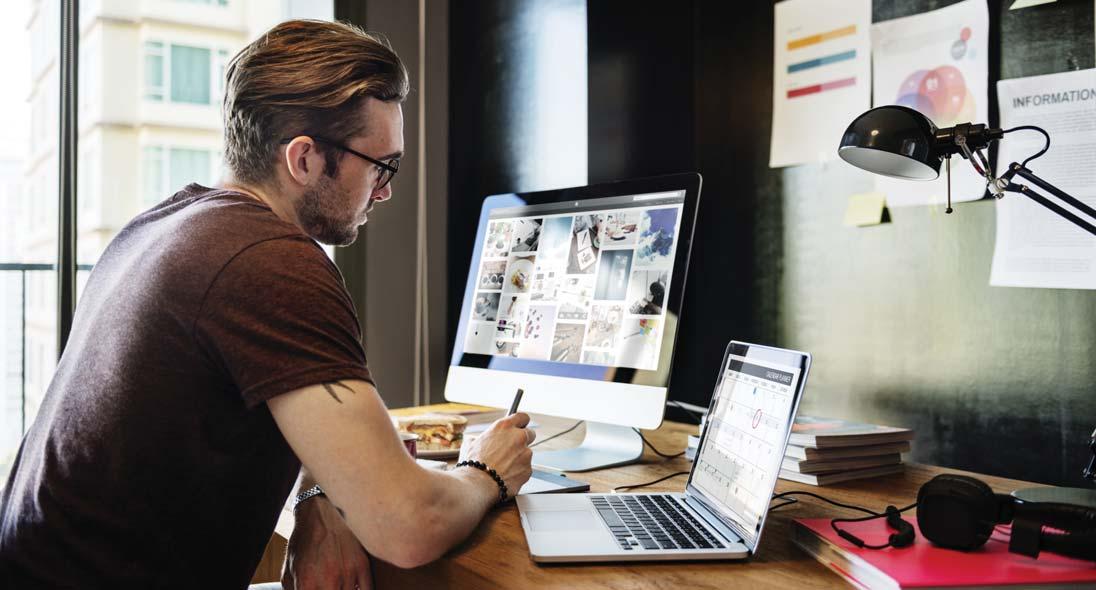
8 minute read
Trends
TrendS Why WELLNESS is the new buzzword
DALLAS SHERRINGHAM
WELLNESS has suddenly become a key word in attracting and maintaining employees in the new age of the COVID-19 pandemic.
A quick search of Google will fi nd a plethora of companies springing up to provide wellness resources for companies keen to establish a ‘healthy’ reputation.
But what is wellness and how can it be applied to the workforce?
Google defi nes wellness as: “the act of practicing healthy habits on a daily basis to attain better physical and mental outcomes”.
So instead of just surviving you will be thriving and as a result you will be a better performing staff member, whether you are in management or a worker.
In the past, the wellness of staff was of little concern to management, except when somebody took “too many sick days” or had a mental meltdown.
Today’s manager must be more than just a leader and slave driver. He or she must be part doctor, part fi tness expert and part social worker to keep staff happy and productive.
For progressive companies it may mean converting unused offi ce or factory space into a wellness centre. One new age company is Wellness Solutions. It creates wellness centres for businesses looking to join the health revolution.
Its aim is to assist companies considering converting an existing room into a wellness lounge.
Wellness Solutions has a range of options including: • Immersive Studios for Movement. • Innovative Wellness Pods with privacy screens. • Community areas such as lounges, co-working spaces and wellness cafes.
The company says If you're limited for space it's easy to create your own custom wellness lounge.
And the wellness pods are a new innovative type of retreat where you can enjoy breathing, massage and meditation sessions while relaxing with your feet up.
It’s now WE not ME
Employee wellness is high on employers’ to-do lists as they look to not only cut health care expenses but improve productivity and recruit and retain top talent.
And as with the rest of their benefi ts portfolio, employers are looking for ideas that will not only set themselves apart from the competition, but also actually drive excitement and interest among employees.
Some places are getting truly creative in the ways they’re working to engage employees in their own wellness, with ideas unique to them.
Others are picking up on what others are doing and then tweaking those ideas to suit their own employee populations.
Another wellness firm Benefits Pro said some companies were really taking on the challenge and reflecting it in the very design of the workplace.
“Whatever strategies they’re trying, companies are finally recognizing that, when it comes to wellness, it’s not enough to talk the talk. They have to walk the walk and incorporate ideas into the mission and values of the company.”
However, companies are now finding that wellness really needs to be a “we” rather than “me” rejuvenation.
“Workplace wellness programs are implicitly focused on the individual: biometric screenings, individual incentives, gym member reimbursements,” Benefit Pro said.
Employees’ shock response….
Take a $30k pay rise or work from home
THE choice is simple. Would you take a $30,000 raise or permanently work from home at your current salary?
In a shock result WFH, or work from home, won hands down, in a USA survey.
If given the choice between the $30,000 raise or permanently WFH, employees at some of the world’s biggest companies said they would choose the latter.
The Business Journals, citing a survey by professional network Blind, said 64% of respondents would forgo the extra cash for the remote work benefi ts.
About 67% of Google respondents preferred permanent work-from-home, as well as 64% of Amazon, 62% of Microsoft, 69% of Apple, 76% of Salesforce and 47% of JPMorgan Chase employees.
The result is as much a refl ection of the massive wages paid on Wall St and in Silicon Valley as it is a true indicator for average workers. However, a similar choice may on the cards for Australian workers in the future.
When the pandemic fi rst hit early last year, Australia’s workplaces looked very diff erent to what has now become the norm in a world still defi ned by COVID-19.
WFH was still a relatively fringe option, generally reserved for only a select few offi ce dwellers.
Yet, a year after the fi rst lockdowns began, a nationwide revolution in how we work has occured.
As a result of the shift to WFH, many Australians increasingly fi nd themselves reassessing their personal circumstances and priorities.
Where once being within comfortable commuting distance of a CBD was considered an absolute necessity, in this new world some Australians now fi nd themselves working from home in an entirely diff erent state.
With this new level of fl exibility and acceptance of alternative working arrangements, as we have reported, many Australians have taken this opportunity to pursue a move to an outer suburban or regional area.
Attitudes towards COVID vaccines
To what degree these trends will remain permanent is still a matter of ongoing debate, as the CBD-based offi ce standard is reassessed through the evolving pandemic situation.
However, the eff ects fl ow on past workers with the need for future public transport, parking and roads all under review. It could mean that CBD’s like Parramatta, Liverpool and Blacktown would be better off if the State Government provided services such localized light rail systems to service increasing demand in those areas.
Instead of funneling workers into metro systems and bus stops, the light rails could link shopping centres and malls with higher density housing.
And if it were up to the workers, WFH would almost certainly be permanent.
According to a study conducted by Swinburne University for the Fair Work Commission, only 5% of workers sent home during the pandemic want to return to the offi ce full-time once the pandemic has fi nally concluded.
More than a year since the 100th COVID-19 case was recorded in March 2020, Australians are WFH than they were before the pandemic and they expect this pattern to continue, according to data released by the Australian Bureau of Statistics (ABS).
A recent ABS survey showed 41% of people with a job WFH at least once a week in February 2021, compared with 24% at least once a week before March 2020.
“Employed Australians expected WFH arrangements to continue throughout the year,” the report said.
In the next six months, 47% of employed Australians expected the amount of WFH to remain the same, 11% expected a decrease and 8% expected an increase.
Employed women at 17% were more likely than employed men at 11% to want to increase the amount of work done from home.
The survey also followed up on Australian’s attitudes towards COVID-19 vaccines.
Almost 75% agreed they would get a COVID-19 vaccine as it became available and was recommended for them.
The number one factor that aff ected the decision to get the vaccine was whether the vaccine had been in use for a long time with no serious side eff ects 27%. Recommendations from the Department of Health at 23% or a GP or other health professional 21% were also important for making decisions.
The survey also asked Australians about how they expected their household fi nances to perform in the next 12 months.
Seven in 10 Australians expected their household fi nances to stay the same, while almost one in fi ve expected them to improve and one in eight expected them to worsen.
Around 50% expected their household to save money, while 23% expected their household will not save any money and 27% did not know.
Meanwhile, three quarters of Australians say their ideal work environment is a mix of remote and in-person working, according to another new study.
More than half of Australians think fewer people will have stable, long-term jobs in the future. Another 16% say they'd prefer a wholly virtual workplace where they can contribute from any location.
A group of 2000 Australian workers was part of one of the largest ever studies of the global workforce, with 32,500 participants from 19 countries.
The survey was conducted in February and respondents included workers, business owners, contract workers, students, unemployed people looking for work, and those on wage subsidies or who were temporarily laid off .
The survey by PwC found the pandemic has intensifi ed Australians' anxiety about the future. It found 56% of Australians think few people will have stable, long-term employment in the future.
Disturbingly, nearly one-third think their job will be obsolete within fi ve years.
Automation is a large concern, with 59% of respondents saying they were worried many jobs were at risk, with 44%t feeling uneasy about their own jobs being at risk.
Nearly two-thirds of Australian participants in the survey felt the government should act to protect jobs, and that feeling was more acute among 18–34-year-olds at 63% than those over 65 at 50%.
Workers in the hospitality and leisure industry, one of the hardest hit in the pandemic, felt most strongly about the government's responsibility to protect jobs at 79%.
However, more than half of Australians still believed technology could improve job prospects, while 17% said it would make no diff erence and 28% thought technology would be an impediment.


Licensed Maintenance Electricians
We are seeking a number of experienced Licensed Maintenance Electricians to undertake reactive and programmed works as a part of our growing team.
You will be allocated a
Hawkesbury, Penrith, Parramatta or Campbelltown areas so if you are “local” to one of those areas and like the idea of work close to home, this might be for you! If you are a licensed electrician whose strengths are in maintenance & service, then get in touch now for an immediate start with our great team.
BENEFITS
Great conditions. Work close to home as a part of a fantastic team.
JOB REQUIREMENTS
1. Licensed Electrician. 2. Experienced in carrying out reactive and programmed our key clients. 3. Driver’s License, Whitecard &
Police Check required.
HOW TO APPLY
Please send a covering letter outlining your experience & suitability, along with your resume to:
MORE INFORMATION
• 1/10 Production Place, Penrith. • $70,000 - $100,000. • 0-5. •
The candidate must have the right to live and work in
Australia.







